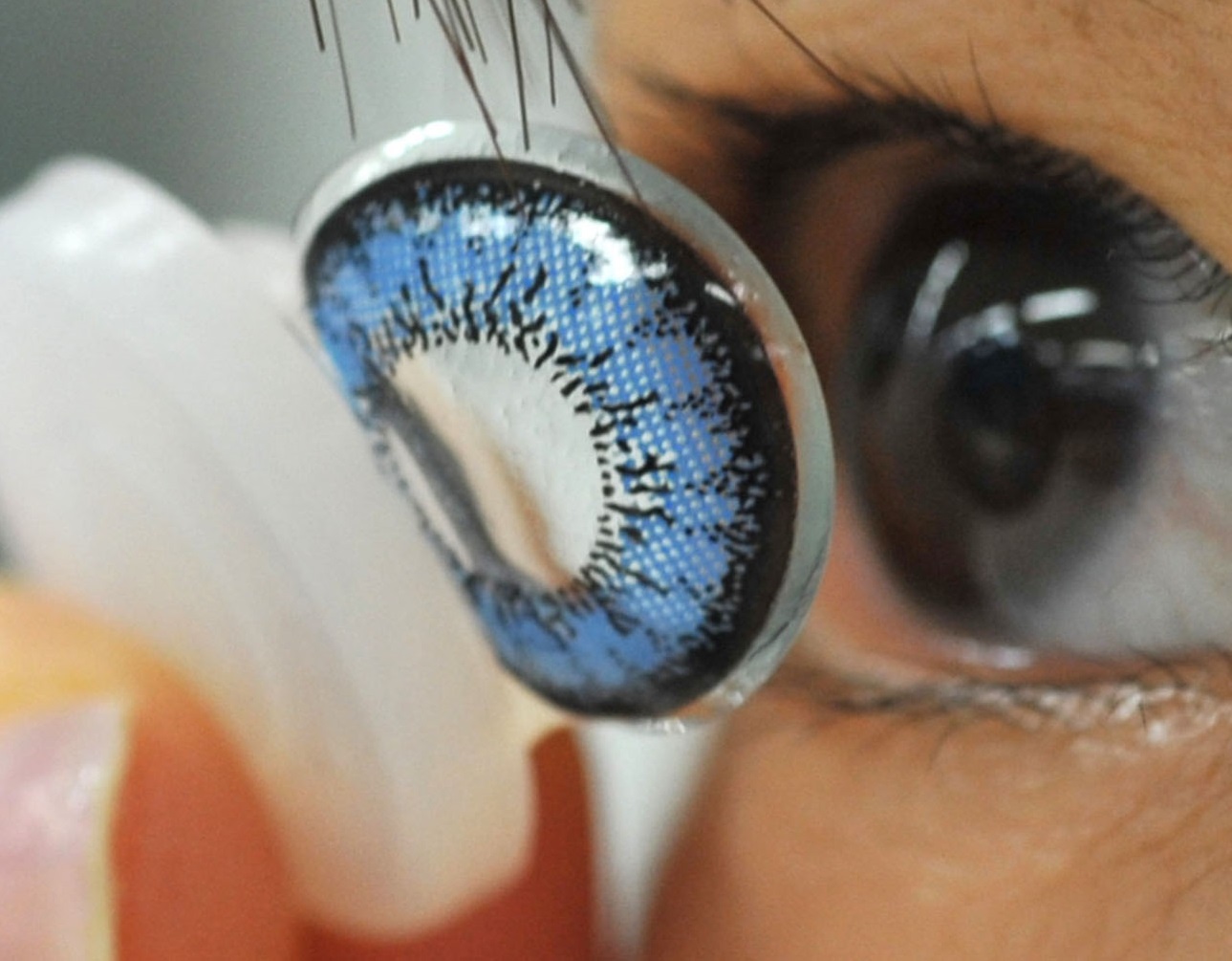Planning to buy colored contact lens online but do not know where to begin? Online shopping for colored contact can be overwhelming and confusing when you are new to the scene. Fret not! We have prepared the ultimate guide for you to ease your journey to a clearer vision and fun experience. Read on.
Table of contents
- What is Colored Contact Lens?
- What is Colored Contacts with Prescription?
- How to Read A Colored Contact Lens Prescription?
- How to Choose The Right Colored Contacts Online?
- What is a Disposable Period?
- How to Dispose Colored Contact Lenses?
- Hygiene, Care & Maintenance
- Transform with Colored Contact Lens
- Children & Contact Lens
- Other Issues You May Encounter While Wearing Contact Lens
- Conclusion
Estimated reading time: 20 minutes

What is Colored Contact Lens?
According to the American Academy of Ophthalmology, a contact lens is a thin, clear plastic disk you wear in your eyes to improve your vision. It is placed directly on the tear film that covers your cornea. Other than correcting vision impairment, contact lenses are worn for cosmetic or therapeutic purposes too, too, known as colored contact lenses. They are sometimes called costume or decorative contact lenses. Colored contact lens changes the way your eyes look, either by giving your eyes a different color, or completely changing the size and shape of your pupil and iris with unique patterns.
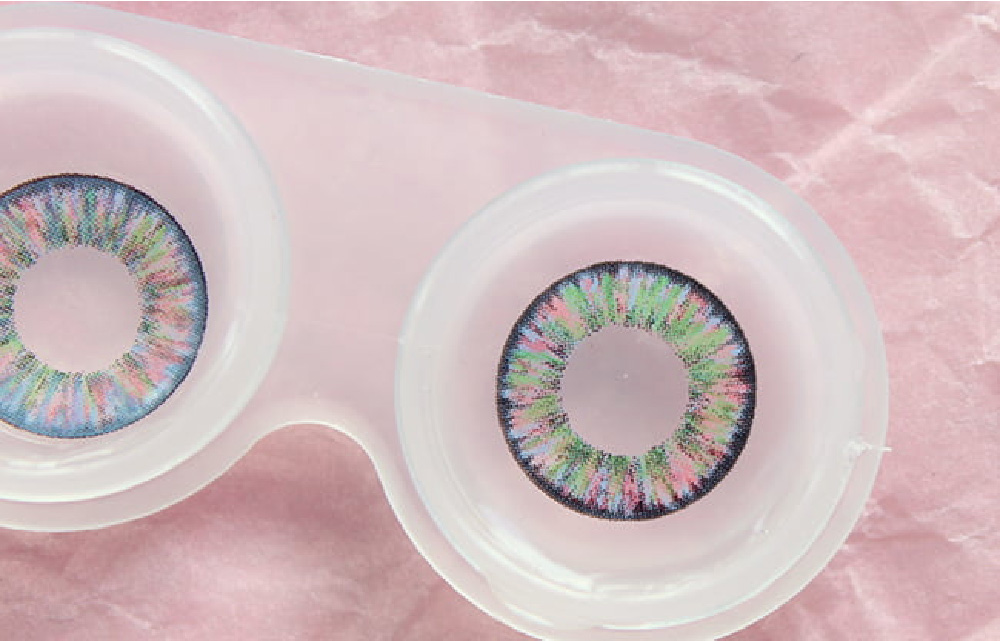
Soft and Rigid Gas Permeable Contacts
In general, there are two types of contact lenses – soft and hard contact lenses or more commonly known as rigid gas permeable contacts (RGP). Today, soft contact lens is the more popular choice amongst contact lens wearers. This is because it is made from soft, flexible plastics with high breathability, so it is more comfortable compared to RGP.
Soft contact lenses are available in clear and colored versions for those who are more adventurous. You can usually buy soft contact lenses on the Internet.
On the other hand, RGP contacts are more reliable, durable, and are known to reduce the risk of infections because of their resistant to deposit build-up.
However, there’s an adaptation period (may take up to a few weeks) for it to feel as comfortable as wearing soft contact lens which only takes several days to get used to.
Extended Wear Contact Lenses
Another type of contact lens is the extended wear contact lenses (EW) for overnight or continuous wear. Newer technology has made it possible for contact lens to be worn over an extended period of time. The use of silicone-hydrogel allows 5 times more oxygen to your cornea while keeping your eyes hydrated during the period of wearing.
Do bear in mind that the length of continuous wear also depends on the lens type and your own eye’s tolerance. It is always good to let your eyes rest without lenses for at least one night each time you remove your EW contacts. EW contacts require minimal care and are approved to be left in the eyes for a straight 7 days.
However, there are some brands like AirOptix Night & Day by Alcon and PureVision by Baush+Lomb which are available online and allow you to wear them continuously for up to 30 days as approved by FDA.
Plano Lenses
Plano lenses refer to contact lenses that change the look of your eyes but do not have visual correcting power. If you go to the optician, your lens prescription will read SPH, PLANO, PL or 00. These lenses are usually for cosmetic uses.
Some examples of plano lenses are colored contact lenses and decorative contact lenses for special effects. Additionally, plano lenses are popular amongst cosplayers.
Special Type of Contact Lenses
The normal diameter of a contact lens is 14mm, about the size of our iris. Circle lens on the other hand ranges from 15mm – 16mm and is meant to make your eyes appeared bigger and doll-like.
Then there is sclera lens which covers the white part of your eyes. They are larger in sizes (from 22mm to 24mm). Today, most sclera lenses are worn for decorative purposes and are easily available online.
However, you should only purchase special contact lenses from trusted online sellers and with prescription.
What is Colored Contacts with Prescription?
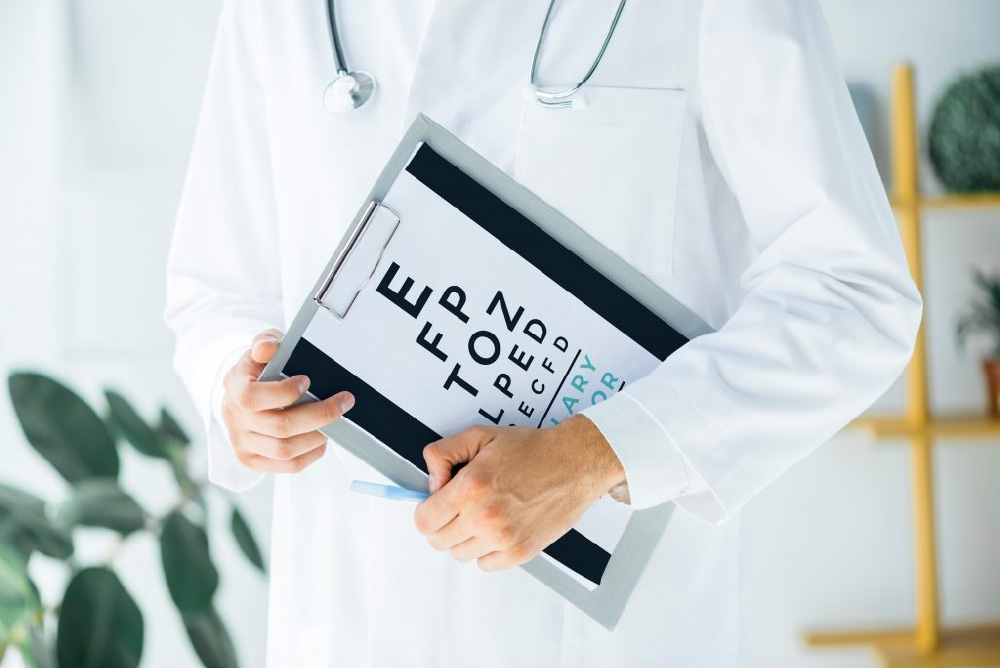
It is important to obtain a contact lens prescription before you purchase yourself a prescription colored contact lens online. When you visit a licensed ophthalmologist or optometrist, you will get a comprehensive eye exam to find out which contact lens will best suit you.
There’s a difference between wearing glasses and a contact lens. Glasses sit at a distance of 12mm from your eyes while contact lenses are placed directly on your cornea. Never use your glass prescription to order contact lenses as it may lead to vision imperfections, add strain on your eyes and in some serious cases, damage your eye.
A prescription for contact lens will contain the following information. These information are important to be used to order your contact lenses from any trusted online seller, to ensure the contact lens you are going to order are safe and comfortable for you.
- Patient’s name
- Date of examination
- Date when the prescription is issued and its expiration date
- Information of the prescriber and service
- Power of prescribed contact lenses
- Material and/or manufacturer of the prescribed contact lens (if appropriate)
- Base curve
- Diameter of prescribed contact lens
How to Read A Colored Contact Lens Prescription?
You need to key in your prescription when buying colored contact lenses online. Your prescription may look alien to you because ophthalmologist or optometrist uses standard terms and abbreviations as well as measurements to write the contact lens prescription. However, they are really pretty simple once you learn about them.
Here are the common contact lens parameters and what each of them means:
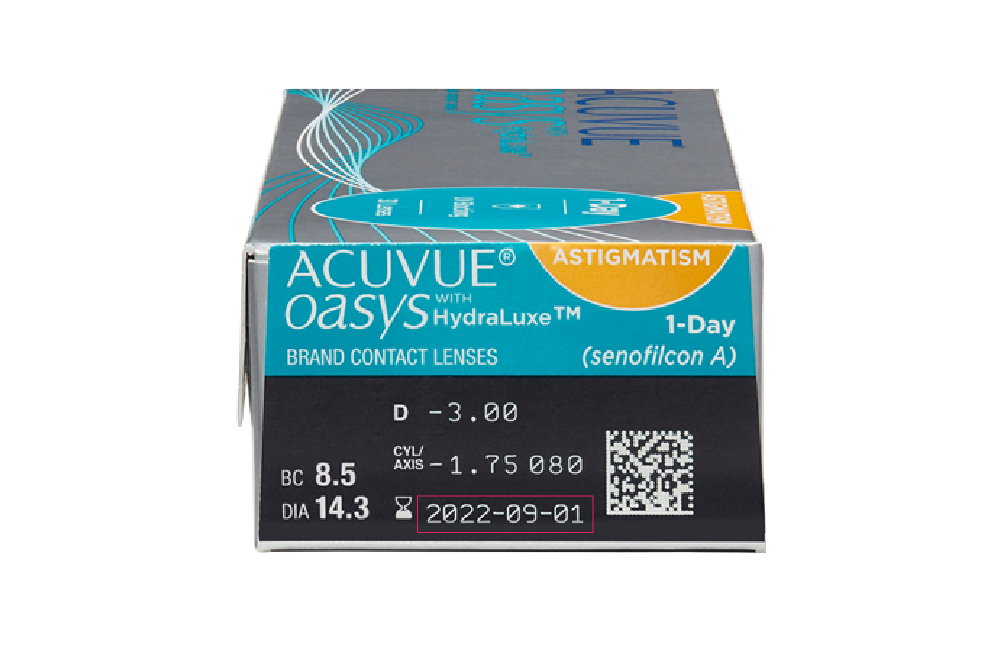
A cylinder value is required for contact lenses for astigmatism. It is a negative value and represents any correction for the curvature of the cornea. CYL is required together with AXIS.
n axis (between 0O to 180O) describes the exact position of the curvature on the cornea.
This is referring to the base curve of the contact lens in millimeters. The curvature of the contact lens determines the shape of your contact lens and the comfort level while wearing the lens because it means how well the lens attaches to your eye. Parameters for BC are between 8 to 10mm.
This is the corrective power of the contact lens. Measured in diopter, the power of your contact lens is indicated with a plus sign (+) for hyperopia (far-sightedness) and a minus sign (-) for myopia (near-sightedness).
This value indicates the diameter of your contact lens. In another word, the size of your contact lens that covers your cornea. Usually, soft lens comes in the size of between 14mm to 16mm.
Addition is the difference between the dioptric value for far vision and near vision. This value is used for multifocal lenses (from 1.00 to 3.00). Those who have a lower value of ADD will find it easier to adapt to multifocal lenses (for Presbyopia) compared to those who have a higher value.
Oculus Dexter (OD): This is your right eye’s parameters.
Oculus Sinister (OS): This is your left eye’s parameters.
Our eyesight and eye’s condition will change over time due to age, lifestyle and even medical reasons. Hence, it is important to get the parameters checked by prescriber every 6 to 12 months to ensure the accuracy of your prescription.
Read more : How to Read Contact Lens Prescription and Get It Right
How to Choose The Right Colored Contacts Online?
Time needed: 5 minutes
How to Choose The Right Colored Contacts Online?
- Get A Valid Prescription
There are many online vendors selling colored and cosmetics contact lens with prescription on the Internet. It is crucial to always go for those that requires prescription for your order to ensure the safe usage of your contact lens. If you reside in the United States, you need to get your prescription verified by your prescriber to the seller (the process is known as RX verification) before the seller can process your contact lens order.
Nowadays, there are service providers such as Visibly* who offers renewal of your prescription online. However, not all tests are guaranteed a new prescription as some individuals may not be eligible for reasons such as age, medical history, location and test responses.
- Check Your Eyes Condition
Other than that, when you purchase contact lenses online, also look out for additional information such as the water content of the contact lens. You may be surprised to note that if you have dry eyes, you should go for lower water content as contact lens with a high water content tends to evaporate faster and causes the eye to dry up faster. It is recommended to go for silicone hydrogel lenses due to its good oxygen permeability.

- Choose Lenses Type
If you are getting your colored contact lenses online, be sure to also check the color blend of the contact lenses. Non-opaque colored contact lenses will blend according to your original eye color and therefore, may look different from the model’s photos on the product page.
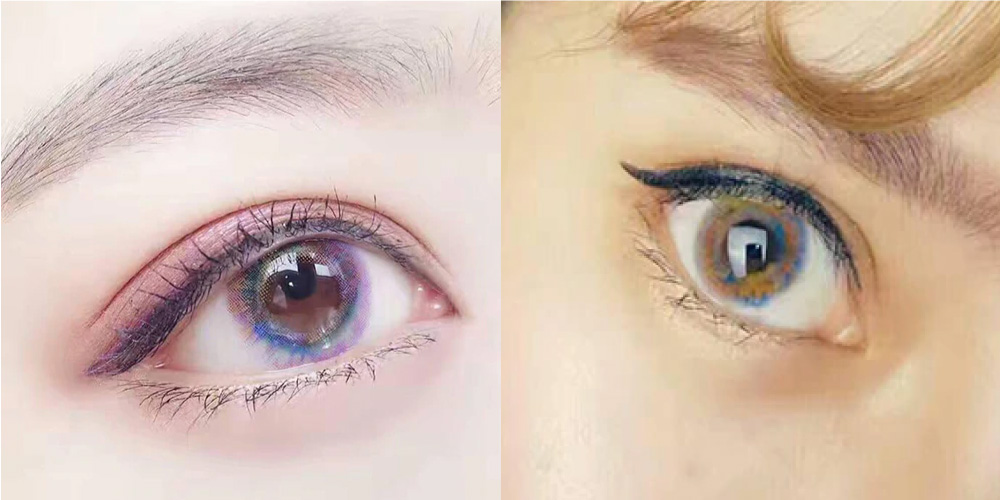
- Decide On Disposable Period
You may also want to take note on the replacement or disposable period of the contact lenses you purchase on the Internet. The good news is, there are various types of disposable contact lenses available in the market to cater to your needs. If you have sensitive eyes, it is best that you choose daily disposable for greater comfort and also hygiene.

What is a Disposable Period?
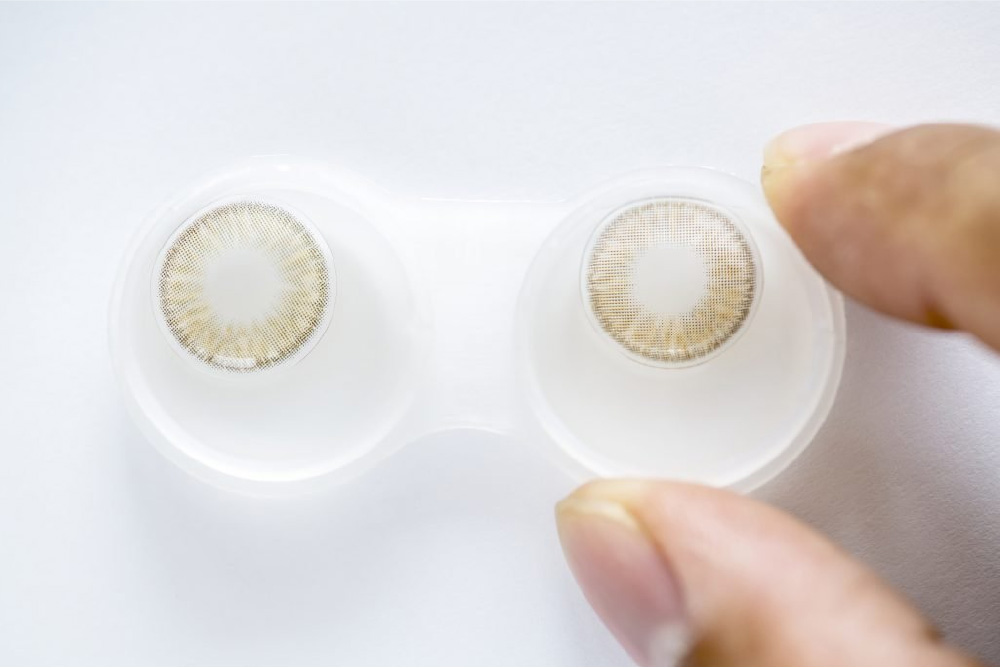
The disposable period of a contact lens is different from the expiration date. It suggests the period of wearing before you should discard or replace the contact lens. The disposable period of the contact lenses can range from daily, weekly, monthly to yearly.
You should discard the contact lenses after the recommended replacement period even if you still feel comfortable wearing them or you do not wear them often enough. This is to prevent irritations caused by protein build-up on the lenses over time.
Check with your eye care practitioner on the lens replacement period that’s most appropriate for you.
How to Dispose Colored Contact Lenses?
Consider this, “In the next 10 years, the waste that slides into waterways, and ultimately the oceans, will reach 22 million tons and possibly as much as 58 million tons a year.” This is an excerpt from an article published online in 2020 by National Geographic.
A recent year study by Charles Rolsky, a PhD student, and his team from Arizona State University found that 15 to 20 percent of contact lens wearers in the U.S are flushing their contact lenses down the sink or toilet. There are roughly 45 million contact lens wearers in the U.S. Although contact lens only occupies a tiny fraction of plastic waste compared to plastic bottles, containers and others, but the amounting figures (if we were to also include other countries) will equate to billions of lenses flushed per year.
Now this tiny piece of plastic doesn’t just disappear, researchers have found that these micro plastics made their ways to water treatment plants, sewerage sludge and eventually, flow into the ocean. What’s more alarming is that, they do not degrade but simply become the food for the fish, and as the food chain goes, they ended up in our body system.
At this point, you should know why you should never flush your used contact lens down the sink or toilet. Instead, dispose them responsibly like how you would do for your other plastic materials. There are some lens companies now offering recycling program for contact lens. Check with the community in your area for similar program. You may also want to switch to weekly or monthly contact lens to reduce plastic waste for those of you who are eco-warriors.
Hygiene, Care & Maintenance
The revolution of contact lens has offered tremendous convenience for people with vision impairment. However, practicing proper hygiene, care and maintenance of your contact lenses are the fundamental steps to ensure a comfortable, enjoyable and safe experience when wearing contact lenses.
Dos and Don’ts to ensure your eye health while wearing colored contact lens:
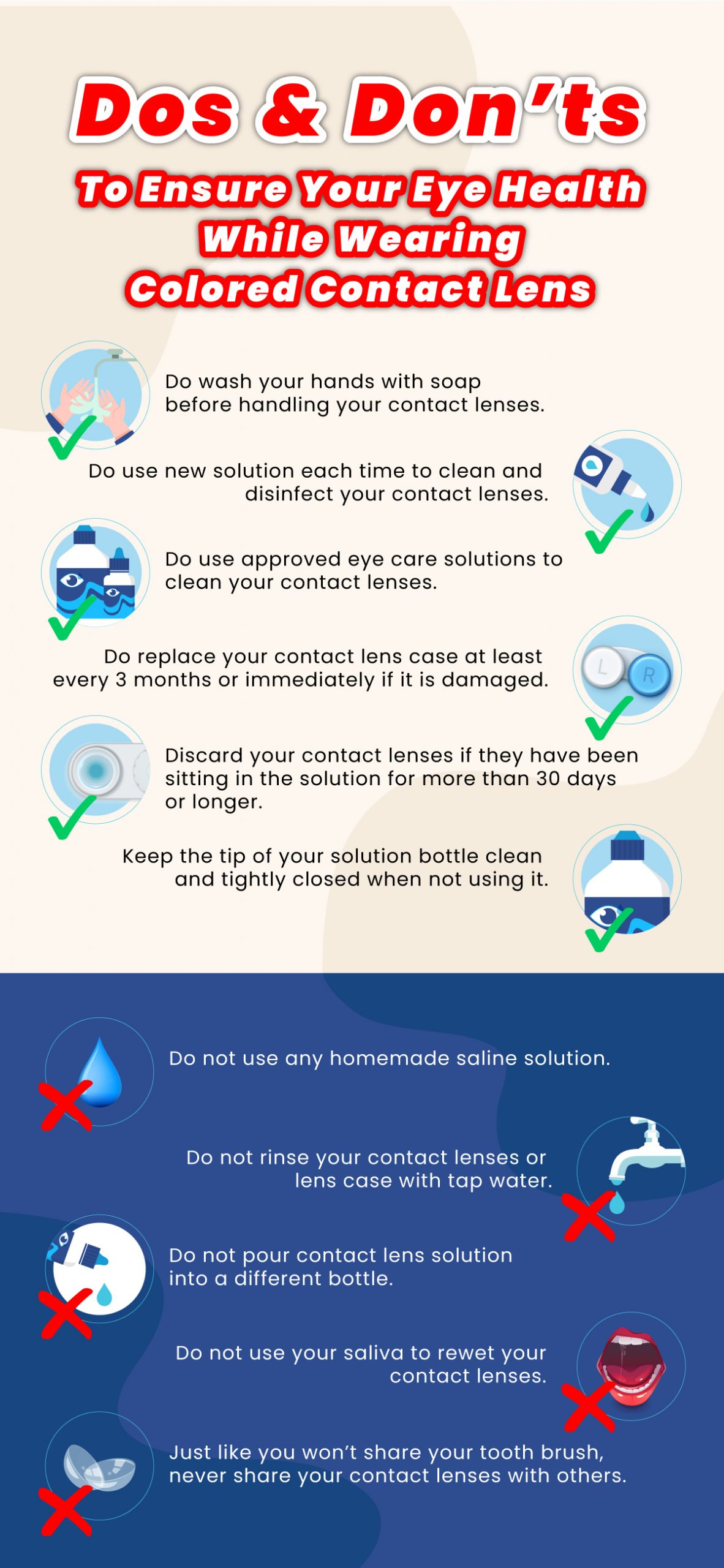
- Do wash your hands with soap before handling your contact lenses.
- Do use new solution each time to clean and disinfect your contact lenses.
- Do use approved eye care solutions to clean your contact lenses.
- Do not use your saliva to rewet your contact lenses.
- Do not use any homemade saline solution.
- Do not rinse your contact lenses or lens case with tap water.
- Do not pour contact lens solution into a different bottle.
- Keep the tip of your solution bottle clean and tightly closed when not using it.
- Do replace your contact lens case at least every 3 months or immediately if it is damaged.
- Discard your contact lenses if they have been sitting in the solution for more than 30 days or longer.
- Just like you won’t share your tooth brush, never share your contact lenses with others.
Read More: Can Contact Lenses cause Subconjunctival Hemorrhage?
Recommended method of hand washing.
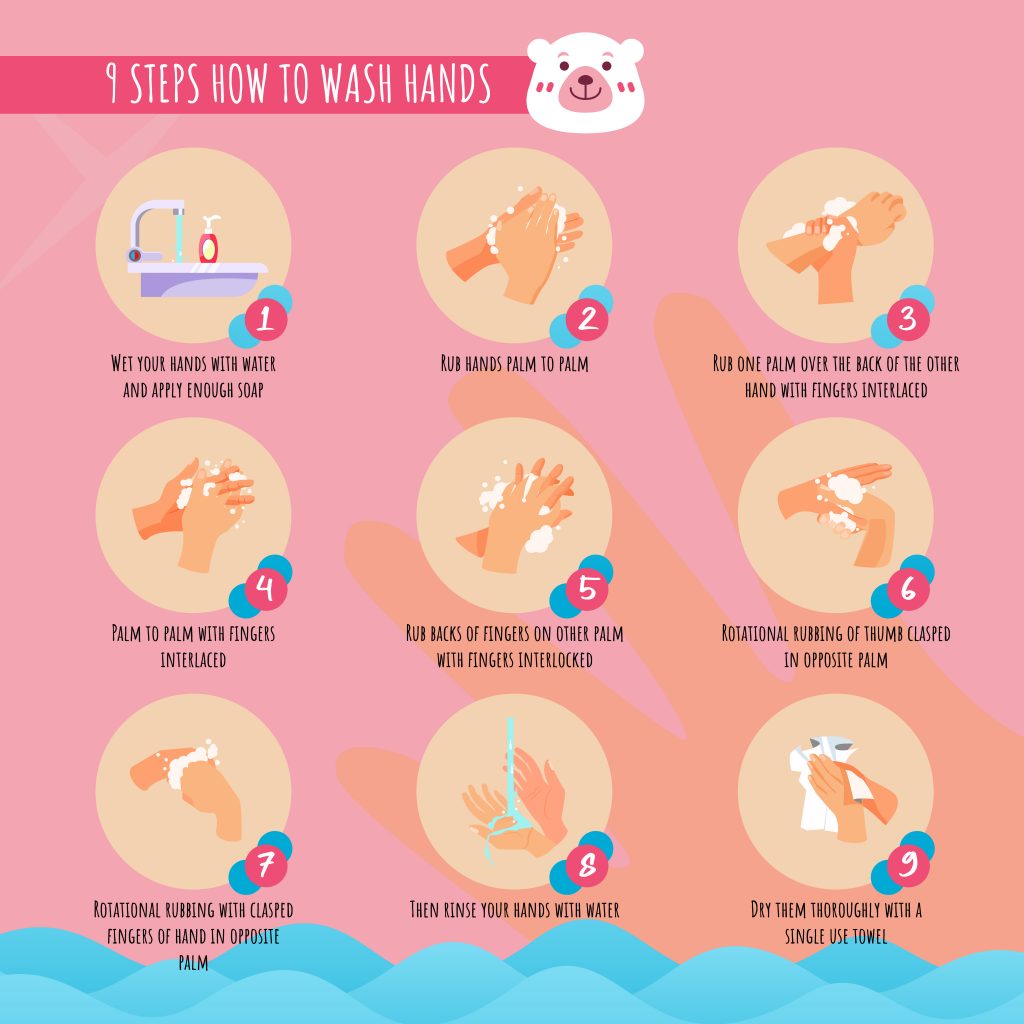
Follow the recommended instructions for the contact lenses. Unless you are wearing daily disposable lens, you will need a few lens accessories and lens case to sanitize and store your contact lens to prevent bacteria contamination. Nowadays, it is easy to do lens care and maintenance with lens case travel kit and lens case that also comes with cleaning function.
Can I wear my colored contact lens straight from the package?
You can wear Daily disposable contact lenses straight from the package (unless your doctor suggested otherwise). Because they are meant for single use, you can just peel open the seal and wear your lenses for up to 8 to 10 hours.
In common, it is advised to soak the contact lenses with multi-purpose solution for at least 24 hours and rinse it before wearing. This is because the solution comes with packages are normally saline solution. Saline solution has lower PH which may irritate your eyes, causing the burning feeling like some users feedback.
Transform with Colored Contact Lens
Colored contact lenses are the same as your regular clear contact lenses. The only different is, well, they have colors (smart!) and some have patterns too. Rocking a pair of colored contact lens has become something of a trend, even amongst the celebrities and during special occasions. Colored contact lenses are used to enhance our eyes or achieve new, dramatic look.
With the plethora of colored contact lenses and cosmetic lenses available conveniently online, how do we choose?
Big, dolly eyes

Don’t you just envy the round, doll-like eyes of the characters in anime series or video games? Now you can achieve the same look with colored contact lenses and circle lenses that sport wider diameter size and limbal ring.
Studies have shown that those with obvious limbal ring – the dark ring that circles your iris, are perceived as healthier and more desirable. The limbal ring diminishes with age and health conditions, so it can’t be fake. Good news is, most colored contact lenses feature limbal rings to give you that prominent look you desire.
Natural look

If you just want to enhance your existing eye colors, you may choose colored contact lenses that are closer to your natural eye colors, or ones that match your hair color to recreate a more harmonious look. Colored contact lenses that are opaque will completely cover your existing eye color. In this case, you can choose an entirely different contact lens color from your original iris.
On the other hand, non-opaque colored contact lenses blend with your eye color so you can go for contact lenses with patterns that will enhance the overall appearance of your eyes.
Special effects

Think Halloween, costume parties, and cosplay conventions. In the past, fancy contact lenses are only used in movie sets. Nowadays, you can easily buy cosmetic contact lenses from online stores. Up your scream-o-meter with sclera contact lenses to complete your spine-chilling Halloween look. You can easily find online tutorials for eye make-ups to bring out the dramatic effects of your contact lenses.
Growing popularity in cosplay has propelled contact lens manufacturers to introduce cosplay contact lenses, basically themed contacts based on characters from film, book, anime or video games.
Heterochromia
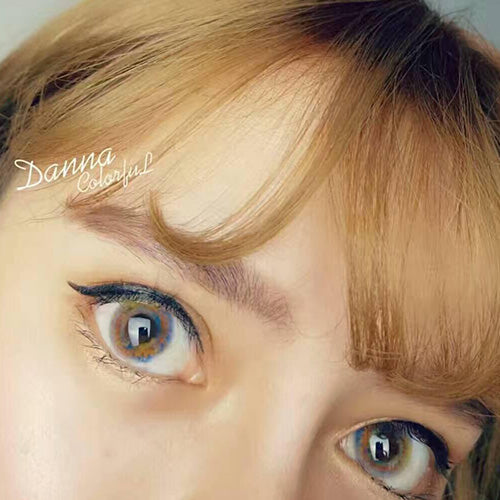
What is heterochromia? The word is derived from ancient Greek, “heteros” means different while “chroma” means color. It is a term used to describe the difference in a person’s eye color, be it having different colors within the same eye or two completely different eye colors. Some people find having heterochromia unique and fascinating. In fact, only 1% of the world’s population has heterochromia, some born with it, some due to injury or healthy problems.
There are many colored contact lenses out there that offers multiple color tones for those of you who want to be out-of-the-box. You can go for the more natural look like a two-tone blue with tinge of honey yellow, or go all out with a rainbow spectrum.
Read more: Beginner’s Guide to Choosing the Right Coloured Contact Lens
Children & Contact Lens
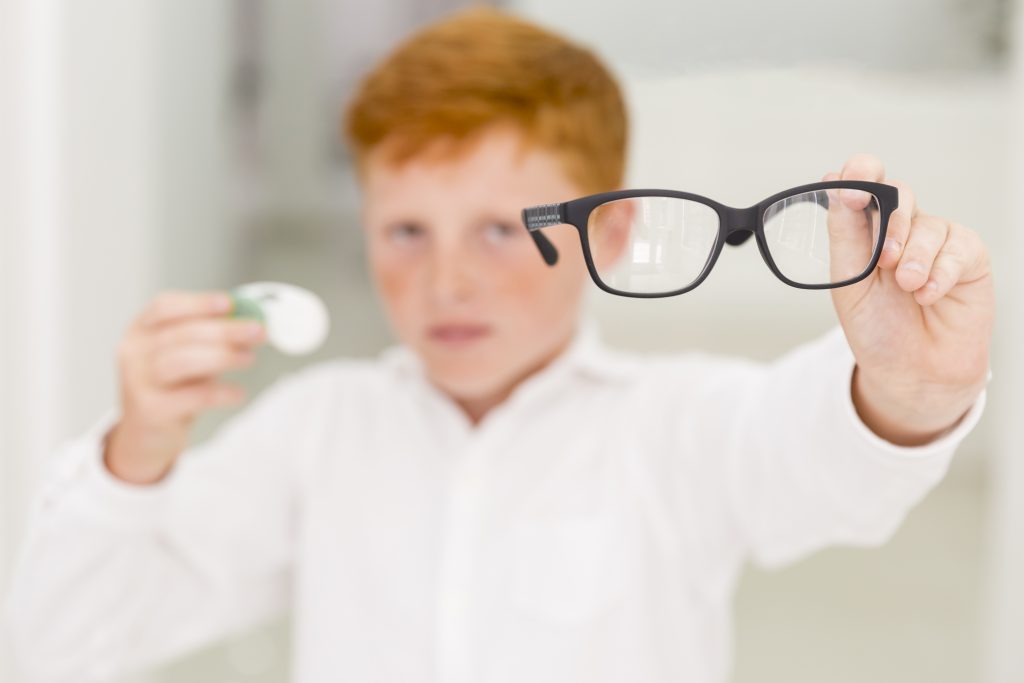
How do you know if your child is ready for contact lenses? Child as young as 8 years old can wear contact lens. However, it is not so much of the calendar age that determines the readiness of the child but the responsibilities the child can handle when wearing contact lenses.
Some of the benefits of wearing contact lenses include:
- Convenience – especially for child who is active in sports.
- Clearer vision – Contact lens may offer better vision compared to glasses as glasses’ have limited peripheral vision (all round view).
- Better appearance – Glasses can be bulky especially those with thick lenses. Sometimes, this may make your child a subject of teasing in schools. Looking better with contact lenses will definitely boost your child’s self-esteem and perhaps lead to better performance in school.
Your child is ready for contact lens if:
- He / she can understand and follow the proper instruction of handling contact lenses.
- Also remember to consult a licensed eye doctor for better assessment.
There are risks involved for a child to wear contact lenses. Improper handling of contact lens and lack of hygiene may result in infections and eye abrasions. In more serious cases, ulcer on the cornea and loss of vision. If your child has allergies or eye sensitivity, you may want to consider against the idea of wearing contact lenses.
Always remove the contact lens immediately if your child experience irritation and consult an eye care professional.
If you would like to know more, read Can my Child Wear Colored Contact Lenses?
Other Issues You May Encounter While Wearing Contact Lens
Wearing contact lens in different climate
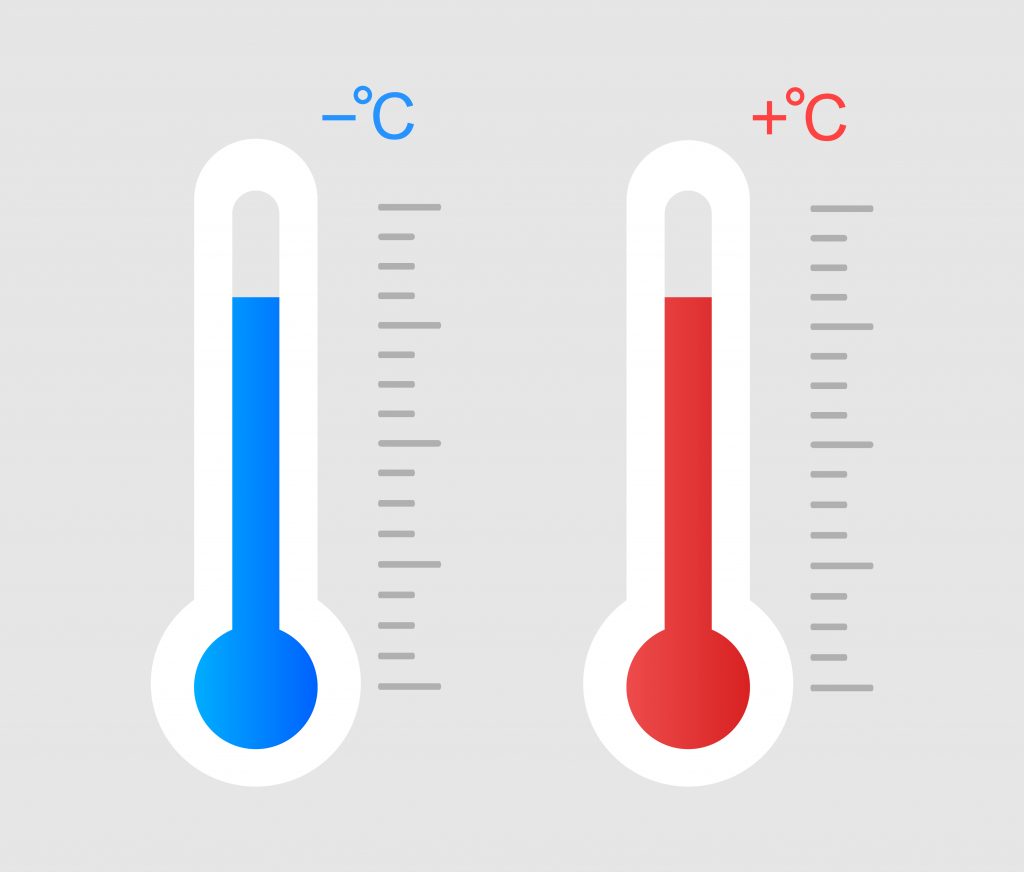
So, you wear your contact lenses all year round. Have you ever noticed any differences when you wear contact lens during warm or cold weather? Or when you are outside and going indoors where it’s air-conditioned? While contact lenses are made to withstand all weather, sometimes, changing temperatures can make wearing contact lens slightly less comfortable.
Read about the tips for wearing contact lens in different climates here.
Wearing contact lens during the pandemic

It is safe to wear your contact lenses during a pandemic. CDC has issued guidelines for contact lens wear to ensure the health of your eyes and contact lens remain intact. You may also want to consider getting some hygiene essentials to help protect your eyes. Most importantly, practice good healthy habits and proper hygiene at all times.
Wondering Wearing Colored Contact Lenses Caused Eye Floaters?
Conclusion
There you go. A complete guide to buying colored contact lens online. Now that you are armed with the knowledge about this magical tiny piece of plastic that gives you a clear vision to the world, head to Uniqso, one of the largest online retailers for contact lenses for amazing collections of colored /cosmetic contact lenses.
Read More:

